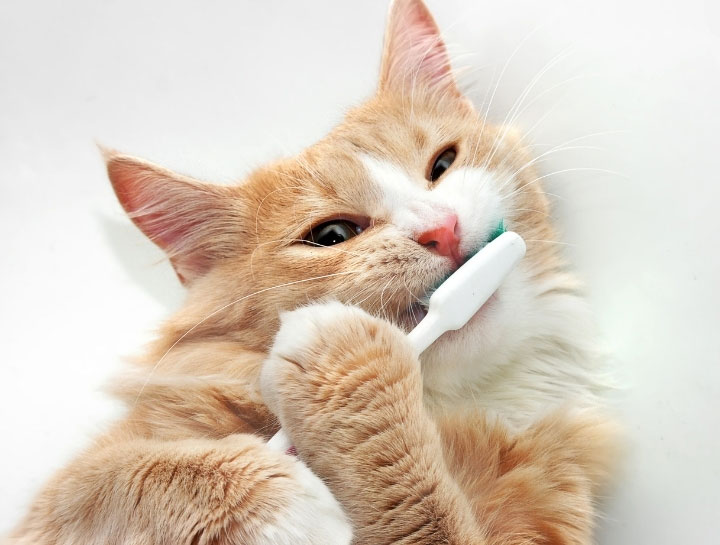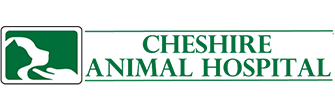Brushing Your Pet’s Teeth

One of the most common steps missed in pet care is dental hygiene. Pet parents remember to brush coats, trim nails and give baths as necessary, but not everyone remembers to brush their pet’s teeth. By the age of three more than 50% of cats have gum disease and studies show similar numbers for canines, left untreated gum disease can be painful and lead to tooth loss. This month, learn how to protect your pet’s dental health with these tooth brushing tips.
Dental care and your pet's health
Just like us, our pets need help keeping their teeth free of plaque and tartar. Left untreated, plaque turns to tartar increasing the risk of bad breath, gum disease, tooth decay, and possible infection. Even brushing your dog or cat’s teeth three days a week can make a significant difference in their oral health.
If possible, teach your pet to accept tooth brushing while they are young. Older pets or requests may require more patience and time to accept the new process.
What kind of toothpaste or toothbrush should I use?
We recommend purchasing products that are specifically designed for your pet. If you are unsure of what toothbrush or toothpaste to buy, ask your veterinarian for recommendations.
Pick a toothbrush that works best for your dog, some pet parents prefer finger brushes or brushes with more angled heads to allow for better control while brushing.
Do not use human toothpaste as it is not safe for consumption as it contains high levels of sodium and xylitol which can be toxic for animals. We recommend avoiding using baking soda formulas as it contains a high alkaline content which can upset their stomach and digestive symptoms.
Preparing your pet
If you are wanting to begin brushing your pet’s teeth, it is important to remember that it is a process and will take time. Choose a quiet time to start and make sure your pet is relaxed. Hold your pet close so you can comfortably handle his or her mouth and teeth.
Start by getting your pet used to you rubbing your finger or soft cloth over the surface of their teeth, in a gentle back and forth motion massaging their gums with light pressure. It may take several attempts for your pet to become used to the sensation. If your pet becomes uncomfortable or struggles against you, take a break, and try again later. Give immediate rewards and praise for good behavior and acceptance.
Once your pet is used to their teeth being touched, introduce toothpaste on your finger or on a piece of cloth. After they’ve accepted the taste of toothpaste, you can use a cloth to rub it across their teeth. If your pet is completely used to you rubbing their teeth with toothpaste and a clock, now you are ready to begin brushing their teeth with a brush.
How to brush your pet's teeth
Similar to the first few steps, you will now have to introduce your pet to their toothbrush. Use the toothpaste to attract your dog or cat to their toothbrush. Let your pet sniff it, rub it along their face and around their lips. Once they’ve accepted their toothbrush, use your finger to raise their upper lip and brush their teeth in a circular motion.
Don’t forget to praise and reward with treats! Focus on the outside surfaces of the teeth and gently along the gumline. Some bleeding may occur initially, but if ongoing bleeding occurs you may be brushing too aggressively, or it may be a sign of gum disease. Speak with your veterinarian for advice if this occurs.
As you brush your pet’s teeth, give praise and encouragement. We recommend brushing for 30 seconds on each side. When you are finished, reward them with their favorite treats and extra attention. Remember to stop if your pet becomes agitated with the process and try again later.
Good oral health doesn’t end with brushing, ask your veterinarian for more tips on how to keep your pet’s mouth free of plaque and tartar. Certain treats, diets, and toys can help reduce build-up and fight bad breath. For more information on how to brush your pet’s teeth or to schedule an appointment, contact Cheshire Animal Hospital today.
